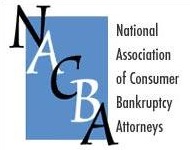
The no man’s land between the mortgage due date and late payment is a persistent trouble spot for Chapter 13 practitioners:
Are there arrears when the case is filed during the grace period and the payment made before it was late?
In Borre, Judge Ronald Sargis of ED CA said no. He held that the payment was not in default until the expiration of the grace period, and where the debtor made the payment timely, a proof of claim that claimed otherwise was erroneous.
Sargis went on to scold the secured creditor and its counsel for its slothlike slowness in correcting the situation by amending its claim. Further, he slammed the servicer for its reliance on declaration of counsel as to the state of the business records of the creditor.
Altogether a satisfying read for debtor’s counsel. Here’s how the holding developed.
The timely post petition payment
Debtor filed Chapter 13 on July 11. The mortgage payment was due on July 1 and delinquent on July 17th.
On July 17, Debtor succeeded in making the July payment, Creditor having earlier refused to accept payment at the branch because the account was locked by reason of the bankruptcy.
Nonetheless, Creditor filed a proof of claim on September 13, asserting a prepetition arrearage of $1440. Debtor objected and the fight was on.
What the POC form requires
Creditor argued, through two hearings, is that the Proof of Claim form called for a snapshot of the account on the date the case was commenced. To which Judge Sargis responded that in fact, the arrearage on the mortgage defined the amount that had to be paid through the plan to cure a default. And by the time the proof of claim was filed, there was no default.
To be an “amount” necessary to cure, there must be a default – an unpaid amount that arose pre-petition. If there is not an unpaid amount of a pre-petition obligation when the proof of claim is filed, then there can be no “Amount necessary to cure any default as of the date of the petition” to be stated in the proof of claim. The Claim erroneously states that as of September 4, 2017, there is a pre-petition default (arrearage) that is necessary to be paid to cure the default. No such default existed as it was paid on July 17, 2017 (after the Bank refused to accept the payment on July 14, 2017). In re Borre, No. 17-24543-E-13, at *16 (Bankr. E.D. Cal. Mar. 1, 2019).
Why Proofs of Claim get prima facie validity
Circling back to the role of the proof of claim in determining whether a proposed Chapter 13 plan is confirmable, Judge Sargis reviewed the language of the claim form.
The information in the proof of claim is proffered under penalty of perjury.
The signatory certifies that the creditor gave the debtor credit for any payment received toward the debt.
In this case, that certification was “inaccurate”, he held. The debtor had not gotten credit for the July payment.
Filing a proof of claim is not merely a series of allegations based on information and belief, which if true, might support the relief requested (such as when filing a complaint). The filing of a proof of claim is much more significant and the statements therein are provided with, and subject to, higher standards.
In re Borre, No. 17-24543-E-13, at *18 (Bankr. E.D. Cal. Mar. 1, 2019)
Who pays
As part of his objection to the proof of claim, Debtor challenged the post petition fees, costs and expenses that Creditor sought for filing the proof of claim and reviewing the proposed Chapter 13 plan as unreasonable.
In light of the importance of the proof of claim in the bankruptcy scheme, Sargis held that $550 for an attorney to review the proof of claim and the mortgage attachment was reasonable.
But with respect to the Debtor’s objection to the proof of claim and the prolonged proceedings that resulted, the Debtor was found to be the prevailing party and awarded his attorneys fees.
Other tidbits
Borre also contains a useful analysis of the burden of proof on an objection to claim, and the burden on the objecting party to present a substantial factual basis equal in force to the creditor’s proof of claim.
On an evidentiary basis, it is worth noting the court’s negative reaction to declarations of “fact” signed by Creditor’s attorney .
All in all, a good read.
More
Mortgage accounting can’t stand scrutiny







